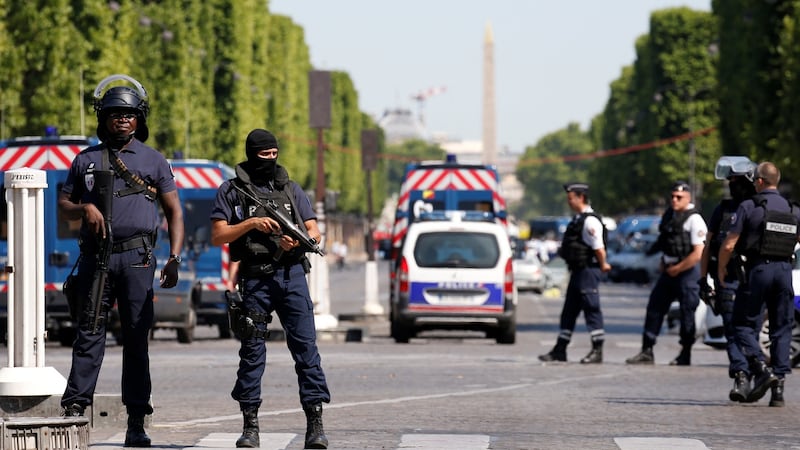A 31-year-old radicalised French Muslim rammed a van carrying gendarmes down the Champs-Élysées in what the interior minister Gérard Colomb called “an attempted terrorist attack” on Monday.
The attacker’s white Renault Mégane contained gas cannisters, a Kalashnikov, two handguns and explosives. It twice collided deliberately with the van, which was part of a convoy heading for a demonstration against labour reform on the Place de la Concorde.
Gendarmes smelled gunpowder when they broke one of the car windows. They pulled back as orange smoke billowed from the vehicle. The driver staggered out, holding a handgun, and collapsed dead on the intersection, a few hundred metres from the Élysée presidential palace. He is believed to have been killed by the blast of an explosion that was contained within the car.

"Yet again, security forces in France have been targeted," Mr Collomb said. "This shows that the threat level in France is extremely high."
The area was cordoned off for several hours while troops examined the car. The assailant’s body lay beside it. His identity papers indicated he was born at Argenteuil, west of Paris, in 1985. Police said he was known to them and appeared on the “S” (for “security”) list of suspected Islamic extremists.
The Concorde and Champs-Élysée metro stations were closed and the Grand Palais museum was evacuated.
On April 20th, also on the Champs-Élysées, another French Muslim, Karim Cheurfi, shot a policeman dead and wounded two others before he was killed. A handwritten note found near Cheurfi’s body said he “defended the cause of Islamic State”. The group, which is also known as Isis, claimed responsibility for the attack.
On June 6th, Farid Ikken attacked a policeman in a patrol on the esplanade in front of Notre Dame Cathedral with a hammer. Ikken called himself “a soldier of the Caliphate”.










